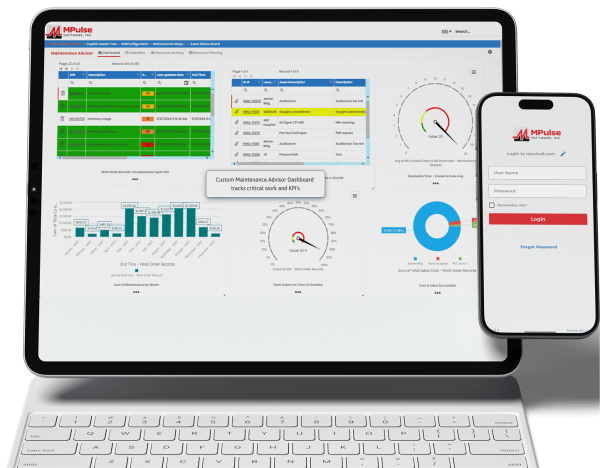Table of Contents
How To Track Maintenance Cost
Maintenance Managers are asked to make two fundamental decisions when presented with a maintenance-related problem: Should we repair or replace the malfunctioning item? Should we do the work internally or should we outsource it to a supplier or vendor?
Of course, there are many factors in making these decisions. However, there is one factor that stands out above all else and that is the cost. Translated simply, it is dollars (insert your country’s currency here). “What will it cost to alleviate the problem and prevent it from returning?” When figuring the cost of a job you must include all the costs, including internal labor costs.
Related: MPulse’s Preventative Maintenace Feature
The Need for Labor Management Software
I have worked with many maintenance departments and maintenance managers over the years setting up CMMS and EAM systems. During initial planning, a discussion point that is often contentious is whether to enter labor hours and labor charge rates. This is especially true when it comes to tracking and reporting on the cost of internal labor on work orders.
Most department managers are more than willing to track the direct cost of parts, supplies, and outside labor consumed to complete a job. The argument against entering internal labor costs is “internal labor is on the payroll anyhow, so there is no additional cost.” While the statement may be correct, the action is incorrect. Tracking only the additional cost of a job really has no value other than possibly matching up invoices for your Accounts Payable department. There is certainly no value in reporting on, and making decisions based on, cost information that only includes an additional cost.
There is not a maintenance manager in the universe who has not come under fire for keeping maintenance costs down. This directive is not to keep the additional cost down, it is for the total cost. The cost of labor in a maintenance department can run as high as 80% of the total cost. How can you manage costs if you are not tracking them? Remember, if you are not tracking costs, then someone above your pay grade is!
So what rate should be used as the multiplier for labor hours to calculate the labor cost of a job? Here are some thoughts:
- Individual employee wage—this is probably the least desirable option as it severely understates the true cost of labor. Also, using employee wages in your CMMS is a real security breach and may be against the internal HR policies for your organization. Another problem with using actual employee wages is sorting out which hours are at straight time and which are at one or more overtime rates. This can be a real bookkeeping nightmare.
- Individual loaded labor rates—the loaded labor rate usually includes things such as wages, taxes, benefits, overtime, and other direct costs to employee the person. Using the loaded labor rate is much closer to the reality of the true cost of labor. Loaded labor rates are typically computed by multiplying an employee’s salary by a department-wide factor of typically around 1.5 – 3.0. Your finance department can most likely provide you with this factor.
- Shop rate—this is used in many industries and can be used quite successfully by a maintenance department. When you enter an automotive repair facility, the shop rate is generally posted as their labor charge rate. I recommend the use of ‘shop rate’ as the multiplier for determining the cost of labor on a job. Using shop rate masks individual compensation from visibility; it includes administrative overhead, and it typically includes the entire cost of doing business. You can find many articles on the internet for methods to determine your shop rate. Using shop rate is the best way to compare what a job costs you to do internally versus what it cost by contracting it out.
By tracking internal labor costs, along with all additional charges, on all your work orders you are providing yourself with meaningful comparative data. Remember, the CMMS is not a bookkeeping system, it is a maintenance tracking system for you to use to make data-driven decisions. This is why you need the whole picture. How do you calculate the total cost of a job, especially internal labor?
Contact us for more information today!





